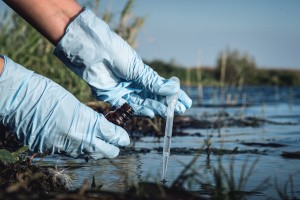Edited by:
Leslie James Robbins, PhD, University of Regina, Canada
Submission Status: Open | Submission Deadline: 9 September 2025

Image credit: © Natali / stock.adobe.com

Leslie James Robbins, PhD, University of Regina, Canada

Image credit: © Natali / stock.adobe.com

Leslie James Robbins, PhD, University of Regina, Canada

The interaction between the biosphere and geologic materials in the environment occurs at a range of scales with respect to life, space, and time. Life can transform the environment through processes such as elemental cycling, transforming materials (nutrients, metals, contaminants), and even building a habitable planet. By understanding how organisms interact with their environment at molecular level, it is possible to better understand how life has affected the cycling of materials at Earth’s surface and in deeper, subsurface environments. A molecular level understanding of these processes is key to studies focuses on both modern and ancient environments. This Collection is broadly interested in articles addressing:
• Microbial cycling of elements in past and present environments
• Cellular processes that lead to distinct environmental or isotopic signatures
• The interaction between life and the environment at a molecular level over varied timescales and across diverse environments
• Experiments that aim to address how cells interact with the environment at a molecular level and how such processes are captured in environmental records
• The transformation of nutrients, metals, or contaminants in the environment by microbial life with an emphasis on the molecular processes controlling such transformations
• How organisms can alter their environment to provide clean energy or water
• Molecular processes that can support sustainability and climate action through the transformation of waste streams.
There are currently no articles in this collection.
This Collection welcomes submission of Research articles, Comments, Methodologies, and Review. Should you wish to submit a different article type, please read our submission guidelines to confirm that type is accepted by the journal.
Articles for this Collection should be submitted via our submission system, Snapp. Please, select the appropriate Collection title “Chemical ecology: Interactions between organisms and their environment at molecular levels" under the “Details” tab during the submission stage.
Articles will undergo the journal’s standard peer-review process and are subject to all the journal’s standard policies. Articles will be added to the Collection as they are published.
The Editors have no competing interests with the submissions which they handle through the peer-review process. The peer-review of any submissions for which the Editors have competing interests is handled by another Editorial Board Member who has no competing interests.